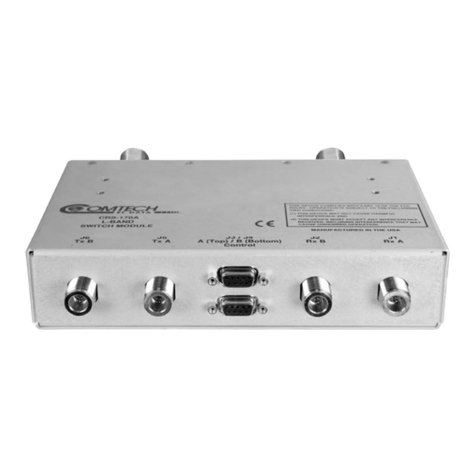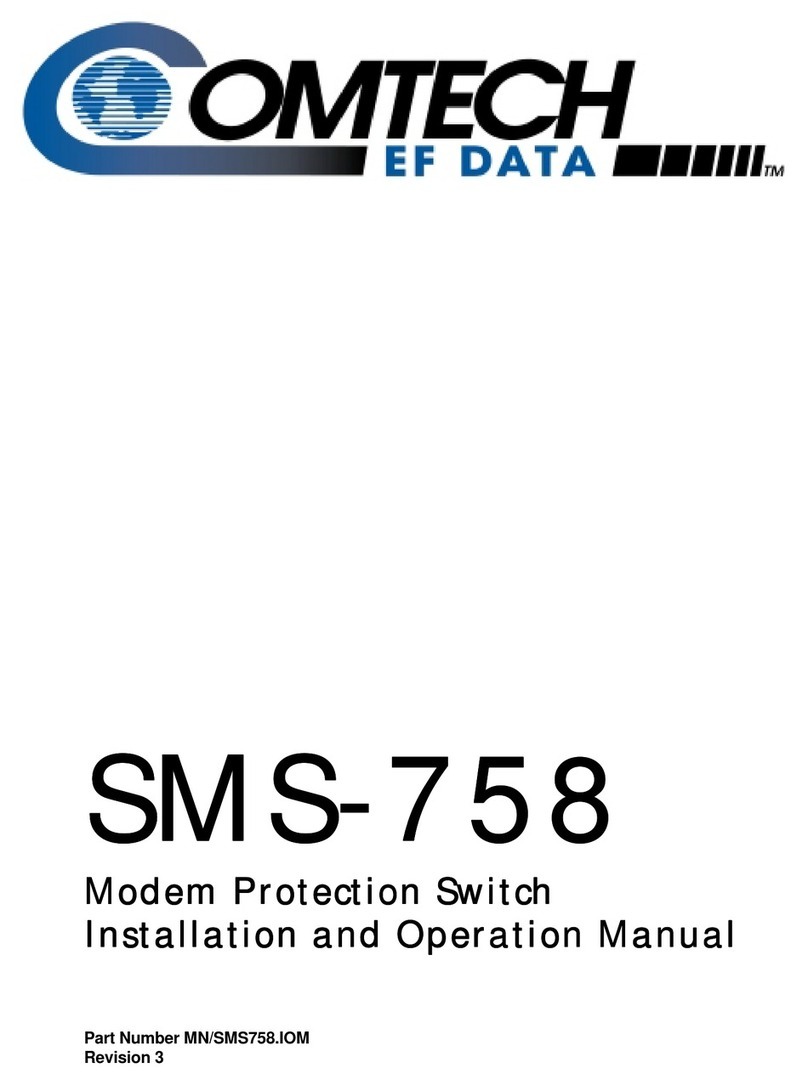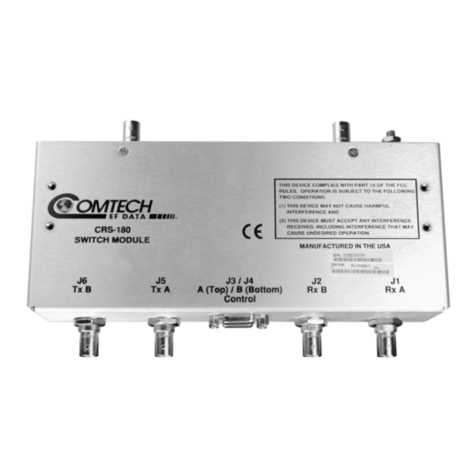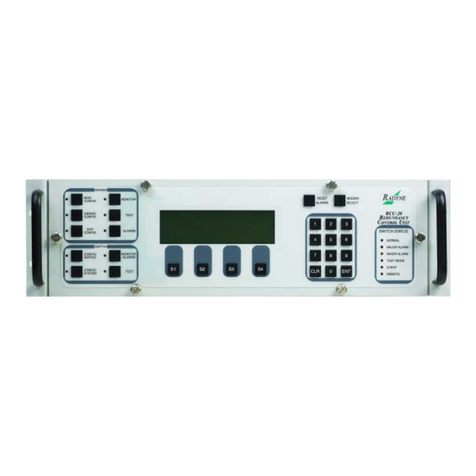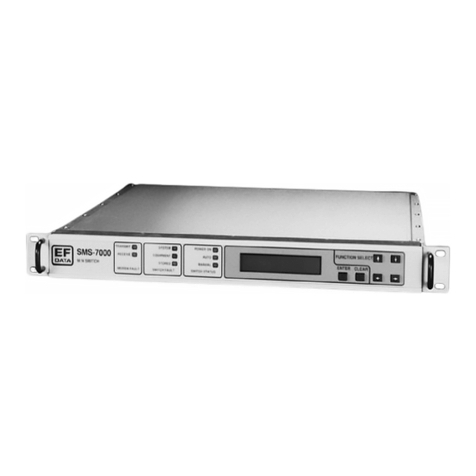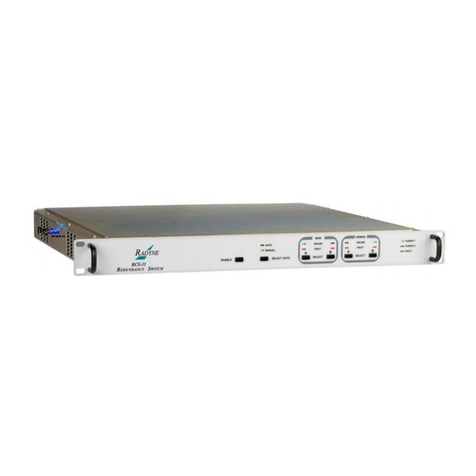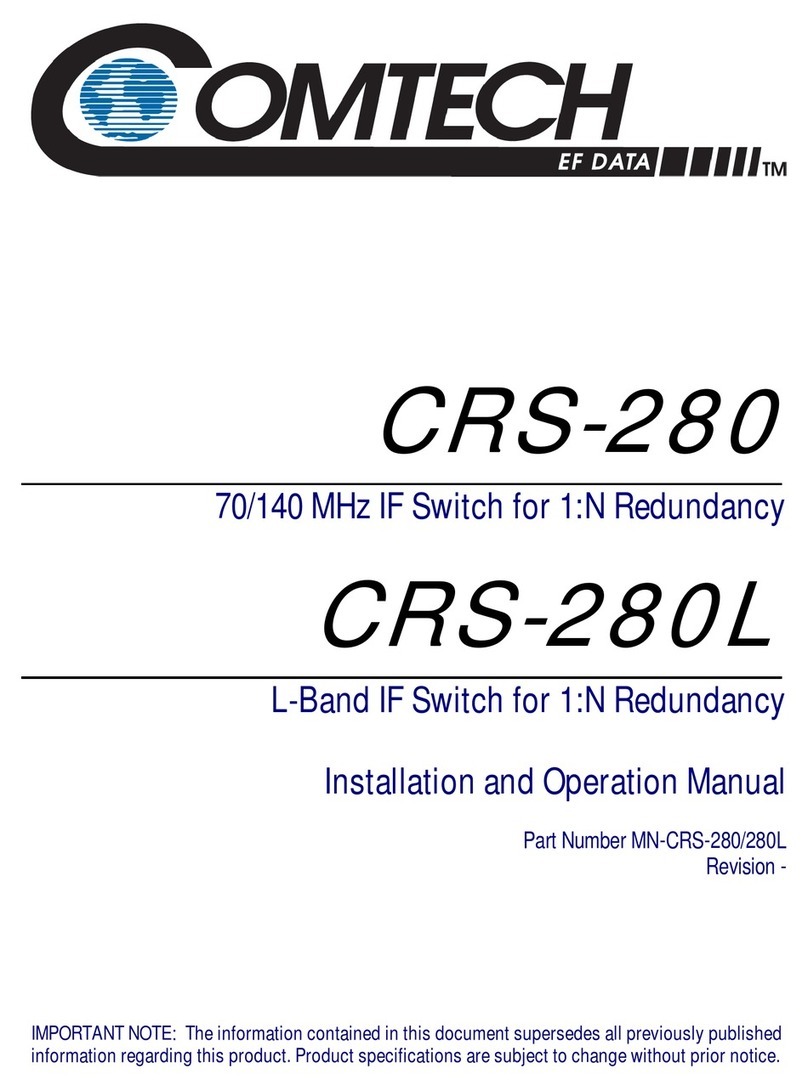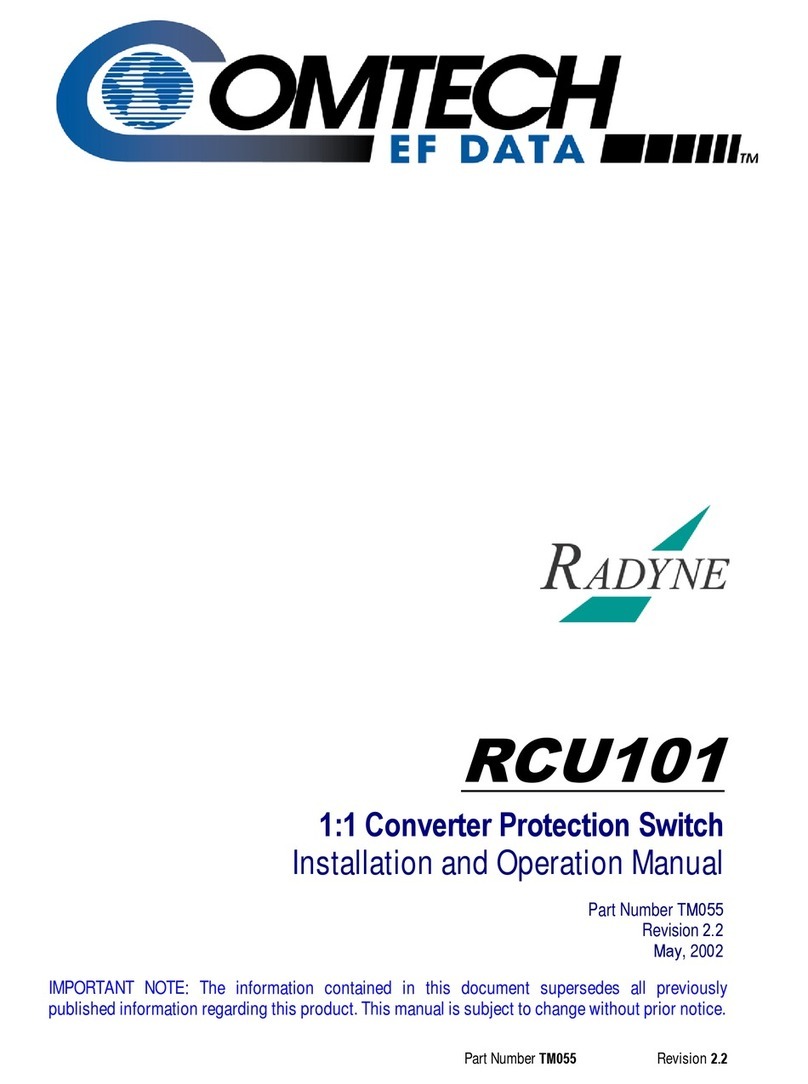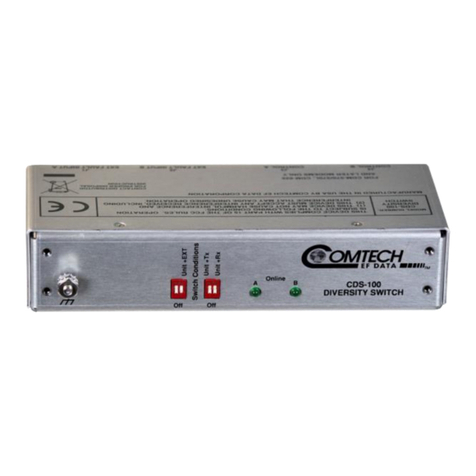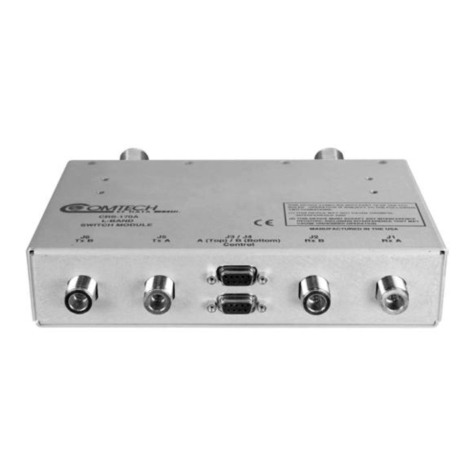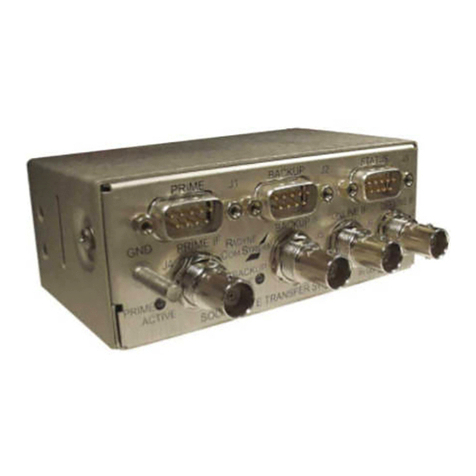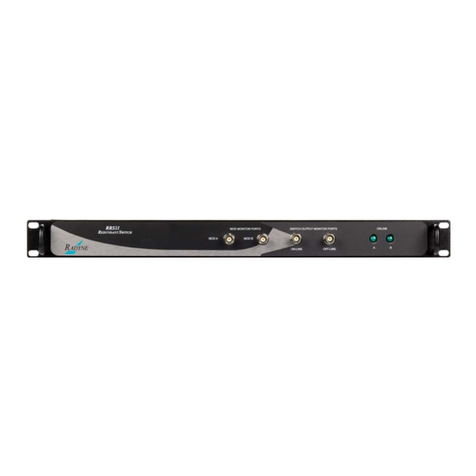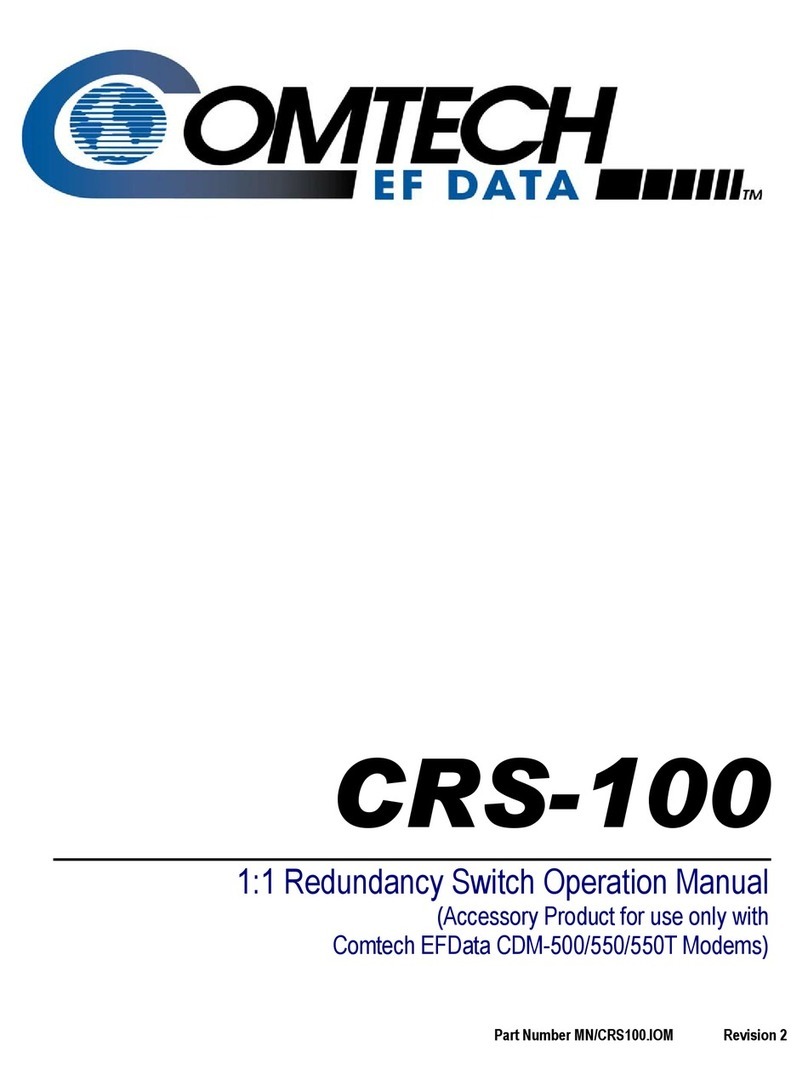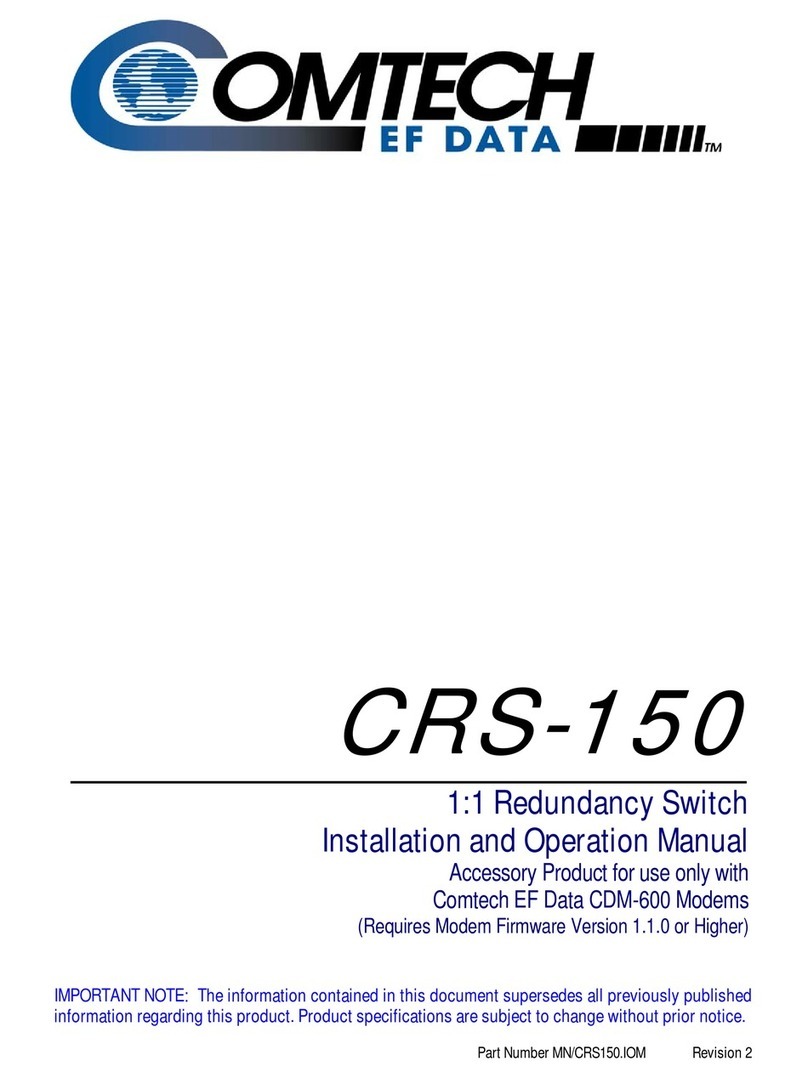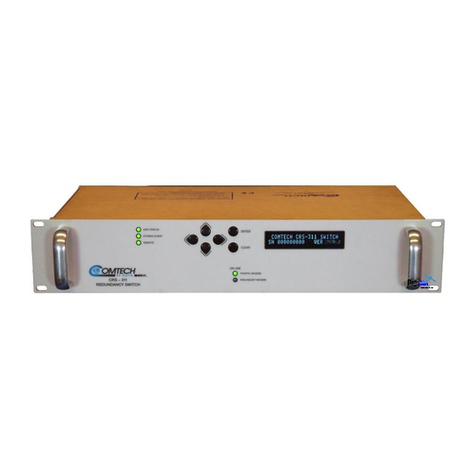
CRS-300 1:10 Redundancy Switch Revision 16
Table of Contents MN/CRS300.IOM
v
4.2.2CRS-300 to CRS-350 Connection...........................................................................................4–4
4.2.3CRS-300 to CRS-350 and CRS-280/280L Connection...........................................................4–4
4.3CDM-570/570L Modem Connections.....................................................................................4–12
4.3.1Control and Data Connections – CRS-300 to Modems.........................................................4–12
4.3.2User Data Connections – CRS-300 to User...........................................................................4–12
4.4CDM-600/600L Modem Connections.....................................................................................4–16
4.4.1Control and Data Connections – CRS-300 to Modems.........................................................4–16
4.4.2User Data Connections – CRS-300 to User..........................................................................4–18
4.4.3ESC Data Connections – CRS-350 to Modems ....................................................................4–18
4.4.4User ESC Data Connections – CRS-350 to User ..................................................................4–18
4.5CDM-625 Modem Connections ..............................................................................................4–22
4.5.1RMI/TMI Limitations and Considerations............................................................................4–22
4.5.2Carrier-in-Carrier®(CnC) Data Connections ........................................................................4–22
4.5.3Control and Data Connections – CRS-300 to Modem ..........................................................4–24
4.5.3.1Required Control Cabling (Regardless of Driving Traffic Data Type) ........................4–24
4.5.3.2G.703 Balanced / Unbalanced Data Connections.........................................................4–25
4.5.3.3ASI Data Connections ..................................................................................................4–26
4.5.3.4EIA-422 Data Connections...........................................................................................4–27
4.5.3.5HSSI Data Connections................................................................................................4–27
4.5.3.6LVDS Data Connections ..............................................................................................4–27
4.5.3.7Quad E1 Data Connections...........................................................................................4–28
4.5.3.8Ethernet Data Connections ...........................................................................................4–29
4.5.3.8.1Ethernet Data Connection – Wired-thru Method (No Sub-Mux)...........................4–29
4.5.3.8.2Ethernet Data Connection – Wired-around Method (Sub-Mux) ............................4–30
4.5.4Data Connections – CRS-300 to User..................................................................................4–35
4.5.5Data Connections – CRS-350 Engineering Service Channel (ESC) Switch.........................4–35
4.5.5.1ESC Data Connections – CRS-350 to Modems............................................................4–35
4.5.5.2ESC Data Connections – CRS-350 to User..................................................................4–35
4.5.6Operation of the CDM-625 in CDM-600/600L Emulation Mode.........................................4–35
4.5.6.1Preparing the CDM-625 for Operation in CDM-600/600L Emulation Mode..............4–35
4.5.6.2Control and Data Connections – CRS-300 to Modems in CDM-600/600L Emulation
Mode ......................................................................................................................................4–36
4.6CDM-Qx/QxL Modem Connections.......................................................................................4–40
4.6.1RMI/TMI Limitations and Considerations............................................................................4–40
4.6.2EIA-485 Connections – CRS-300 to Modems......................................................................4–40
4.6.3Control Y-Cable Connections – CRS-300 to Modems..........................................................4–42
4.6.4Traffic Data Connections – CRS-300 to Modems.................................................................4–42
4.6.5User Data Connections – CRS-300 to User...........................................................................4–43
4.7CDM-700 Modem Connections ..............................................................................................4–50
4.7.1RMI/TMI Limitations and Considerations............................................................................4–50
4.7.2Interface Combinations..........................................................................................................4–50
4.7.3Control Cable Connections – CRS-300 to Modems..............................................................4–51
4.7.4Serial Traffic Data Connections – CRS-300 to Modems ......................................................4–51
4.7.5Ethernet Traffic Data Connections - CRS-300 to Modems...................................................4–52
4.7.5.1Wired-thru Connections................................................................................................4–52
